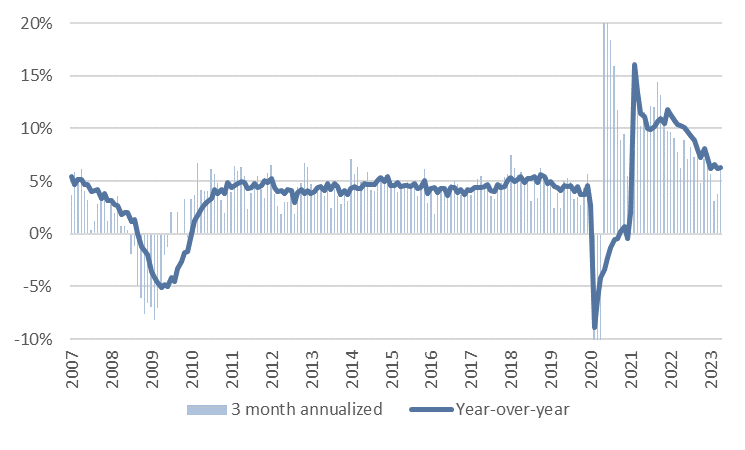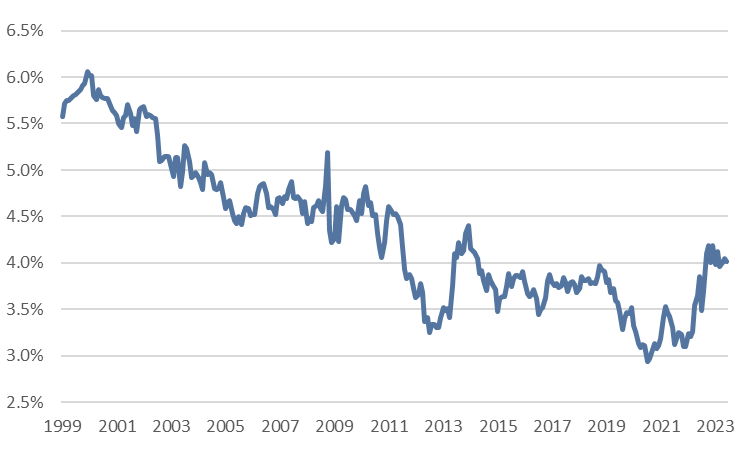What Type of Recession
What Type of Recession?
I believe there is significant confusion in the general commentary regarding recessions and their impact on risk assets. The commentary usually follows straightforward logic: Recessions have coincided with drawdowns in equities and other risk assets. Therefore, no matter the circumstances, if we have a recession, you don’t want to own risk assets.
There’s an easy, ongoing counterpoint to this logical fallacy: Germany. During Q4 2022 and Q1 2023, Germany experienced a recession that coincided with a +29% gain in the DAX Index. Similarly, Japan experienced several high-employment recessions in the 2010s that had modest to no impact on risk assets.
Yes, it is true that US recessions have historically coincided with weak performance for risk assets and poor labor markets. But it is not true that all recessions include bad labor markets. The focus on recession as an indicator of market returns is misguided. Instead, we should consider the type of recession we will eventually have. In a world of low-trend real GDP growth, a boring German or Japanese-style recession will become increasingly common.
Bad recessions — the ones that coincide with bear markets — are almost always caused by negative NGDP (i.e., negative aggregate income) growth. That’s not a concern in the US at the current time (Fig. 1).
Fig. 1: Aggregate Weekly Payroll growth, a proxy for NGDP, remains above 5%

Safe Spending Rates
Last year’s surge in interest rates brought pain to bond portfolios, but pain begets gain in financial markets. Some of the biggest beneficiaries of higher rates are investors that are spending out of their portfolios.
Sometimes clients ask us about so-called safe withdrawal rates. The only way to be perfectly “safe” regarding spending is to invest in a portfolio of inflation-indexed bonds that perfectly match your future spending – an impossibility of precognition that doesn’t account for longevity risk — or to annuitize the portfolio. Still, we can approximate safe spending rates using inflation-indexed bond yields. For example, a current safe spending rate for an investor with a 30-year horizon is about 4%, up from a measly 3% during 2020.
Of course, most investors can and will target spending rates above 4% because they are comfortable accepting some level of investment risk, bequest risk, and spending risk. A customized financial plan is the most effective way to combine these factors, along with incorporating personal nuances around taxes, asset allocation, and asset location.
Fig. 2: “Safe withdrawal rates” increased in 2022

Download Document
Download NowDisclosures & Important Information
Any views expressed above represent the opinions of Mill Creek Capital Advisers ("MCCA") and are not intended as a forecast or guarantee of future results. This information is for educational purposes only. It is not intended to provide, and should not be relied upon for, particular investment advice. This publication has been prepared by MCCA. The publication is provided for information purposes only. The information contained in this publication has been obtained from sources that
MCCA believes to be reliable, but MCCA does not represent or warrant that it is accurate or complete. The views in this publication are those of MCCA and are subject to change, and MCCA has no obligation to update its opinions or the information in this publication. While MCCA has obtained information believed to be reliable, MCCA, nor any of their respective officers, partners, or employees accepts any liability whatsoever for any direct or consequential loss arising from any use of this publication or its contents.
© 2025 All rights reserved. Trademarks “Mill Creek,” “Mill Creek Capital” and “Mill Creek Capital Advisors” are the exclusive property of Mill Creek Capital Advisors, LLC, are registered in the U.S. Patent and Trademark Office, and may not be used without written permission.